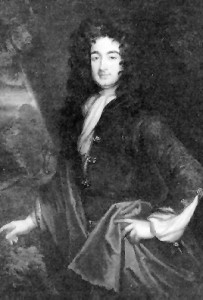Born in Scotland in 1712, Hamilton was educated at the University of Edinburgh where his father, Reverend William Hamilton, was an influential academic. In 1739, Hamilton emigrated to Maryland and started his own practice in Annapolis.
In 1744, after a period of ill health, Hamilton embarked on a tour of New England, riding on horseback to Maine and back. During this four-month sojourn he recorded his experiences of the colonial towns and people he encountered. During one overnight stay at Brookhaven, a hamlet on Long Island, Hamilton met a septuagenarian named Smith who claimed to be looking for work as captain of a pirate ship, despite having no previous experience. According to Hamilton:
“He showed us several antic tricks, such as jumping half a foot high upon his bum, without touching the floor with any other part of his body. Then he turned and did the same upon his belly. Then he stood upright upon his head. He told us he was 75 years of age and swore damn-his-old-shoes if any man in America could do the like.”
Hamilton later returned to his practice in Annapolis and married into the powerful Dulany family. He became a respected physician, popular for his forthright but easy nature and his dry wit. After serving briefly in the Maryland assembly, Alexander Hamilton died in 1756.
Source: Dr Alexander Hamilton, Itinerarium, 1744. Content on this page is © Alpha History 2019-23. Content may not be republished without our express permission. For more information please refer to our Terms of Use or contact Alpha History.


